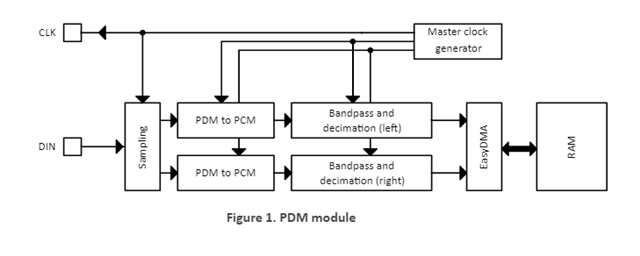Dear Nordic,
In our application, we use nRF52840 (nRF5 SDK) and a PDM microphone to listen to the very quiet signals.
We would like to understand how exactly gain works. I could not find more information than this:
https://infocenter.nordicsemi.com/index.jsp?topic=%2Fcom.nordic.infocenter.nrf52832.ps.v1.1%2Fpdm.html
Is the gain just purely digital multiplication/division and can be applied after processing producing the same result?
Or can increased gain improve the SNR for a quiet signal?
Best regards,
Marcin



